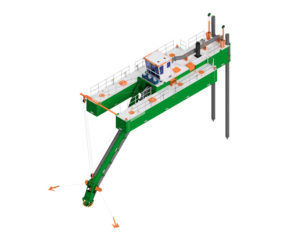
Elevator advertising is a unique medium that can effectively capture the attention of a captive audience in high-traffic urban areas. However, like any advertising strategy, it comes with its own set of challenges. Understanding these pitfalls can help marketers create more effective campaigns and ensure a higher return on investment. Below are some common challenges associated with elevator advertising.
Limited exposure time:
One of the primary challenges of elevator advertising is the limited time viewers spend in the elevator. Riders often have only a few seconds to absorb the advertising message before they reach their destination. This brevity necessitates concise messaging and impactful visuals that can communicate the brand’s message quickly. If the content is too complex or cluttered, it risks losing the viewer’s attention before the message is fully conveyed.
Audience fragmentation:
Elevators in different buildings serve various demographics, which can lead to audience fragmentation. For example, an elevator in a corporate office will attract a different audience than one in a shopping mall or residential complex. As such, creating a one-size-fits-all advertisement can be ineffective. Marketers must tailor their campaigns to the specific audience present in each location to increase engagement and relevance, which can be resource-intensive.
Visibility issues:
The physical space within an elevator can also present challenges. Factors such as lighting, the size of the elevator, and the positioning of the advertising materials can affect visibility. For instance, poorly lit elevators may make it difficult for riders to see static ads, while digital screens may reflect light, causing distractions. Ensuring that ads are visible from various angles and distances require careful planning and design considerations.
Technical glitches:
Digital elevator advertising relies heavily on technology, making it susceptible to technical issues. Malfunctions such as screen freezes, poor video quality, or connectivity problems can significantly detract from the advertising experience. Brands must ensure that their technology is reliable and that contingency plans are in place to address any issues quickly.
Content relevance:
Maintaining the relevance of the content is important in elevator advertising. As the audience changes throughout the day or week, the advertisements need to be updated frequently to ensure they resonate with current viewers. Failure to keep content fresh can lead to viewer fatigue, where audiences become desensitized to the ads, reducing their overall effectiveness.







